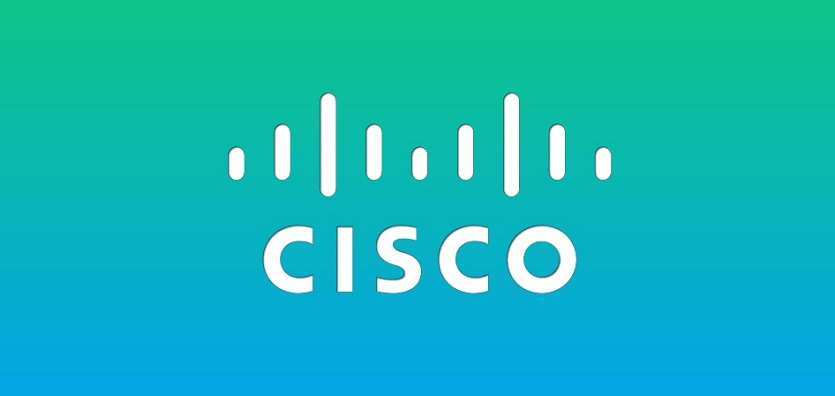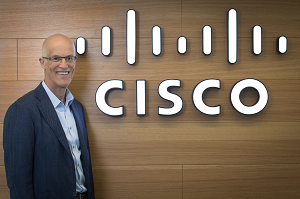
 By Kevin Bloch
By Kevin Bloch
Chief Technology Officer, Cisco Australia & New Zealand
The following is a summary of predictions of the ICT trends for 2019, selected due to their impact on the networking industry and forecast what is expected to happen or start happening, within the next 12 months.
“The moment the rate of change outside your organisation exceeds that within, the end is near” – Jack Welch
As we enter the fourth year of the “Fourth Industrial Revolution” – the era of connected intelligence, our relationships with technology and its impact on global society will come into even sharper focus. The reality of the revolution is both promising and threatening. The primary new technologies of this decade – Artificial Intelligence (AI), cloud, mobile/5G, cybersecurity, blockchain and the Internet of Things (IoT) – are even more significant and impactful than we may realise. They are powerful actors that can change the core of society.
They are beginning to intersect and produce what is sometimes referred to as ‘combinatorial innovation,’ with software at the epicentre and connected intelligence the end result. Left unchecked, these technologies and complex interactions will shape us. We can expect more regulation if companies don’t move to sensible self-regulation. It is critical that we look ahead into what is possible, lead and thoughtfully shape this fourth industrial revolution. If we succeed, the outlook for information technology to impact and improve our lives will be very bright.
1. Your app is your brand – digital displaces physical in the connected, softwarecentric
customer experience
Today, over one-third of shoppers use smartphone apps to browse, research or compare prices before they buy. Almost every organisation already has a digital presence and a digital entrance and apps have become the new ‘shop front’. As a result, customers will develop a perception of brand through a digital experience instead of the touch-and-feel experience of bricks and mortar stores and service centres. The app and the brand will become one. The experience delivered by apps will therefore be critical to business and
raises the priority level of software development, operation and automation in terms of speed to market, cost, reliability and risk.
2. From mobile-first to AI-first – connected augmented intelligence
If the trebling of global investment into AI is any indicator, expectations are extraordinarily high. Business focus has shifted from customer connectivity (mobile-first) to what the connectivity can enable and the behaviour it can measure (AI-first). However ‘artificial general intelligence’ (i.e. multi-skilled and human-like) is still decades away and when compared to other living beings, we are ‘at the worm stage’. On the other hand, ‘connected augmented intelligence’, intelligence that assists human decision-making, is here now. For example, connected, human-driven, intelligent vehicles are in widespread operation today, whereas autonomous vehicles are only in limited deployment.
AI is advancing rapidly across areas such as sensory systems, predictive analytics, image analysis, speech recognition and machine learning. AI commoditisation through plug-andplay solutions will accelerate as leading technology providers, notably Google (e.g. Google Assistant, TensorFlow), Microsoft (e.g. Cortana, Azure Machine Learning) and Amazon (e.g. Alexa, SageMaker), make new announcements almost weekly. Surprisingly, business adoption is lagging but this is not expected to last long.
3. Infrastructure as code – connected intuitive infrastructure
Despite retail outlets struggling, shopping is as popular as ever. The in-person shopper experience is making way for digital and software is dominating design and deployment of shopping malls as well as almost all physical infrastructure, from buildings and transportation to IT itself. Connected intuitive infrastructure enables sensing, analysis and action that leverages a combination of networking and AI. IT infrastructure is shifting from a system of physical boxes to just one or a few software entities and operated as code. This transition began a few years ago in the data centre/cloud and in several telecommunications networks. It is now expected to take hold in the WAN and access networks.
2019 will be the ‘year of SD-WAN’ with an expected 37 percent compound annual growth rate. Hardware will undergo its own transformation with massive advancements such as 7nm chips, 3D chip stacking, optical-photonic integration and a new generation of AIspecific silicon. Despite an unsteady start, confidence in IoT is high. It is an integral part of connected intuitive infrastructure, with an expected economic impact of $11 trillion by 2025.
4. Tech reality bites – economic dislocation
Existing challenges such as unemployment (through automation), unemployability (which is worse), cyber risk, fake news, algorithmic accountability and digital distraction will be more obvious and acute. New challenges are also emerging. Power is shifting from government into the hands of a small number of powerful multi-national technology organisations based in the US or China. Trust in institutions is at a historic low. Government intervention for law enforcement (encryption), national security, data protection, ethical AI (AI-to-human and AI-to-AI), data/algorithm bias and copyright will escalate alongside new regulation. The shortage of women in technology is a priority especially as demand for technology-based
jobs grows at the expense of other traditional, manual types of work.
5. Expanding to Cloud – telemetry, policy and AI are key
Even public cloud providers now understand that it may take longer, if ever, to expand to public cloud. This realisation has impacted expectations such as timing and investment and market dynamics, such as supply-side technology relationships (e.g. Cisco with Google, Microsoft and Amazon). Nevertheless, cloud continues to disrupt IT innovation, consumption and the industry itself. Cloud capabilities such as serverless computing, edge computing, containers, microservices and AI toolkits provide compelling options for rapid,
cost-effective development and deployment of modern software and applications. Expanding to cloud will require a sharper focus on telemetry, policy and AI to manage, secure, orchestrate and automate operations.
6. Cyber defence is a system and culture, not a product – perimeters shift closer to the entities they protect
It is estimated that there are more than 120 million new variants of malware every year and that the cost of cyber-crime is now in the trillions. Nation-state attacks are being called out by governments under attack and state actors are being arrested. Anyone still buying discrete appliances to combat cyber-attack will fall behind – defence is a system and a culture, not a product. It is complex and remediation can be costly if not, devastating. Rearchitecting cyber security will gather pace. Zero trust networking with a security posture of default deny, will be the first step to continuous risk/trust assessment. The hype around ‘perimeter-less’ networks is misguided as there will actually be an increase, not a decrease, in the number of demarcation boundaries of trust.
Small-to-medium businesses (SMBs) that thought they were not worth attacking will need to think again. SMBs by definition, have fewer resources and therefore represent a large number of small ‘soft’ targets. They will therefore require a solid approach to threat intelligence and management.
7. Faster and wider – 5G and nano satellites
Anticipation and expectation of 5G is probably higher than any other new technology in history. Governments believe 5G will affect national security and economic performance in decades to come and several mobile operators are literally betting their businesses on it. While it promises higher speed and other benefits such as lower latency, 5G raises many questions around its commercial value proposition against existing options including 4G/LTE and Wi-Fi variants. 5G is also headed for a collision course with fixed-line broadband threatening its business case.
2019 will be a year of marketing (and politics) and figuring out the use-cases and business case. Full-scale deployment will follow, probably slightly delayed. At the same time, satellite will step back onto centre stage for two important reasons – coverage and cost. Massive cost reductions through efficiencies in rocket launch and re-use as well as technology advancement, promise to enable a new generation of nano-satellites to belatedly and costeffectively connect some of the most remote places on earth.
8. The value of data – now to control and monetise
Amidst so much change, one thing we can predict with certainty – production and demand for data will continue to soar. Global IP traffic will grow three-fold to 2022 and mobile data will grow seven-fold. Economies are transitioning from human-scale to machine-scale, which means that more decisions are being made by machines, and that machines and AI will thirst for more data. The value of data is clearer than ever, as machines with the right data help us make smarter, quicker decisions.
Traditional organisations like banks and telecommunication operators are acutely aware that they have stimulated data production and consumption while someone else has been taking advantage of it at their expense. The challenge is how to control and monetise it. As data becomes more personalised, it generates numerous opportunities as well as challenges for consumers, businesses and governments. Tension will rise between government and consumers and we can expect more regulation not less.
9. Decentralised Web and the Internet of Blockchains – Web 3.0 and distributed trust
In less than a decade, the World Economic Forum expects that 10 percent of global Gross Domestic Product (GDP) will be stored on blockchain. However, in 2018, crypto-currencies such as Bitcoin that use blockchain, have been in turbulence, turning the curious into sceptics and in some cases, disbelievers. But we should not to be side-tracked by cryptocurrencies. Blockchain itself is a serious, secure, distributed ledger and digital cryptographic platform. Venture capital and other investment is consistently growing. Blockchain offers distinct value to supply chains – trust enshrined in decentralised crypto-algorithms. Its credentialing capability is more secure and robust than alternatives, it is open source, collectively owned, decentralised and neutral – critical ingredients for Web 3.0 and the ‘decentralised Web’ (DWEB). While it has massive scope, we can expect initial use cases based on permissioned access (i.e. private) blockchain. The huge disruption to business models will push out public blockchain deployment by at least 3-5 years.
10. Anywhere, anytime, any mode transport as-a-service – connected and autonomous
vehicles
The vehicle industry is a beacon for how technology can transform an entire sector and impact adjacent ones too. Although autonomous vehicles (AV) seem to attract the most attention, other transitions within the industry are taking hold and impacting consumers much sooner. Electric vehicles (EV) are more of a given now than a bold vision and although it will take some years, the move to EV is certain. Connectivity technology will undergo a disruptive, winner-take-most battle between the well-known and universally supported Dedicated Short-Range Communications (DSRC) technology and the relative newcomer (and
incompatible), cellular vehicle-to-everything (C-V2X) alternative. Vehicle ownership will decline as the shift towards shared platforms and Mobility-as-a-Service (MAs) accelerate. These platforms are spawning new forms of transport including electric bikes and scooters.





